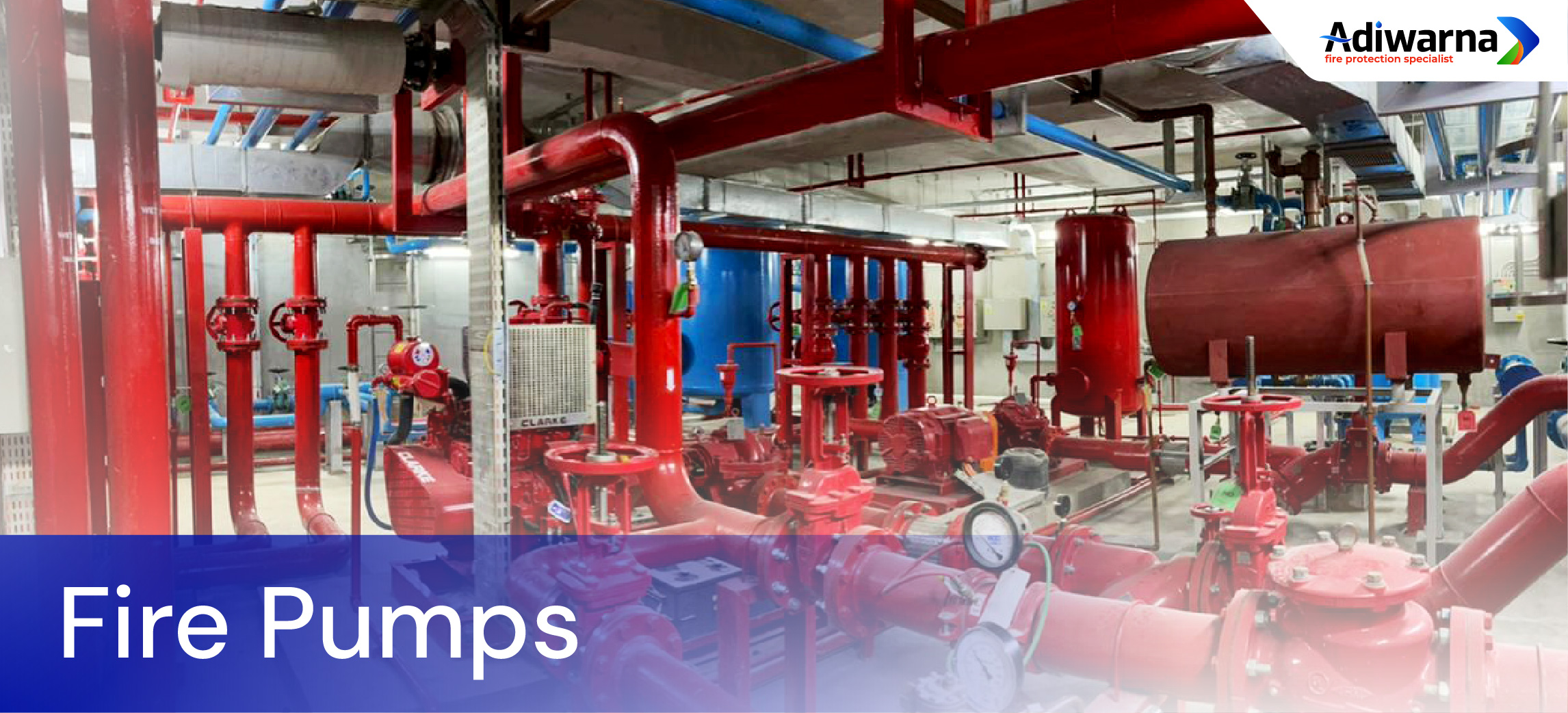Fire pumps are one of the most common types of pumps that we see as laymen and as industry players in manufacturing. This is because almost all types of multi-storey buildings in Indonesia have fire pumps.
Some places where this pump installation can be seen clearly are in buildings where there are many general public, such as hospitals, hotels, campuses, restaurants, and many more.
While in offices, factories, and other places that are not visited by the general public, fire pumps must still be installed. But only certain rooms are reached by this pump, for example rooms with a high level of fire risk, rooms with many important documents, and others.
A fire pump is a device to increase water pressure in the pipes of a building that activates when it detects high temperatures in the room, smoke, or other indications of fire. This pump itself requires additional components to work to extinguish the fire, such as Fire sprinkles, Fire fighting hose, Valve.
Fire Pump Function
The main function of a fire pump is to keep the water pressure in the building’s fire suppression system high. That way the water can flow to the sprinklers in seconds and extinguish the fire according to the location sent by the temperature or smoke sensors.
If the water is not in high-pressure condition, they can still flow to the sprinklers. But it takes several minutes from the water source to all floors in a multi-storey building. As a result, the fire may grow before the water can reach the floor.
In addition, the high pressure water produced by the fire pump also allows the fire sprinkler to sprinkle water in a wider radius. If the water pressure is weak, the radius that the water sprinkler can reach is even weaker. This can increase the risk of the fire staying lit in the blind spot of the water sprinkler.
Type of Fire Pumps
- Horizontal Split Pump
This type of pump is most widely used in high-rise buildings used for offices, hotels, apartments, schools, and other buildings where there are no giant production machines or equipment like in a factory. Horizontal split case pumps can produce high water pressure, with enough capacity to cover all areas of the building. In addition, maintenance of this type of pump is also very easy. So that building managers are not required to have technicians on guard every day. - Vertical Split Pump
This type of pump also has the same workings, advantages, and applications as the horizontal split pump. The difference is that the vertical split pump has a standing design with outlets that remain parallel to the horizontal pump. The use of vertical split pumps and horizontal split pumps is only differentiated based on room availability conditions. If the room is only sufficient to use a vertical split pump because the area is limited, then the pump will be installed. Conversely, if the room for the fire hydrant system is large enough, then the pump used is a horizontal split pump. - Vertical Inline Pump
The next type of pump also has a vertical shape, similar to the vertical split pump. However, the vertical inline pump uses the working principle of a centrifugal pump and is generally made with a single stage pump. Vertical inline pumps are also equally used for fire fighting system rooms with limited space availability. The vertical inline pump installation also requires the most affordable funds, because the pump price is cheap, the installation is relatively easy, and does not require many additional components. - Vertical Turbine Pump
Vertical turbine pumps are a type of fire pump that has passed the international safety standard, NFPA 20. With this pump, you are allowed to use water sources from rivers and subgrade tanks which are considered low-grades water supply. In addition, this pump can also be used in raw water supplies such as lakes, dams, reservoirs, or water sources that are also used by the general public. Vertical turbine pumps are available in various sizes, capacities, pressures, and prices. In addition, this pump can operate using electricity or diesel. - End Suction Pump
The last type of fire pump is the end suction pump. This pump also has a simple working principle, even including one of the fire pumps with the simplest way of working. The end suction pump is horizontal without a split. This pump only has one inlet at the end and an outlet at the other end. Then, there is only one impeller inside because this pump is a single stage centrifugal pump. End suction pumps are usually used in fire protection building installations for smaller buildings. Some examples include grocery stores, home industries, kiosks, small open workspaces, and many more. The capacity and pressure that can be generated in this pump is also relatively small. So it will not be able to protect buildings with more than 4 floors. While the advantage of this pump is its sleek design and easy to install. Even in the installation and maintenance of end suction pumps, technicians only need to come once when installing and then only need to check once every one or two months for 30 minutes.

